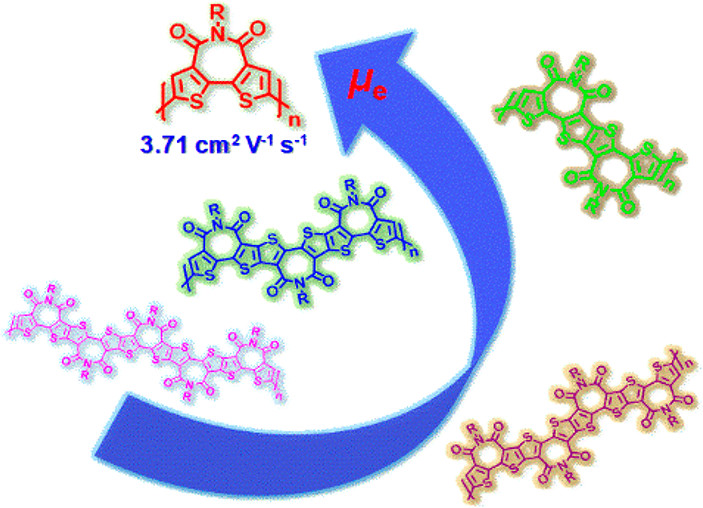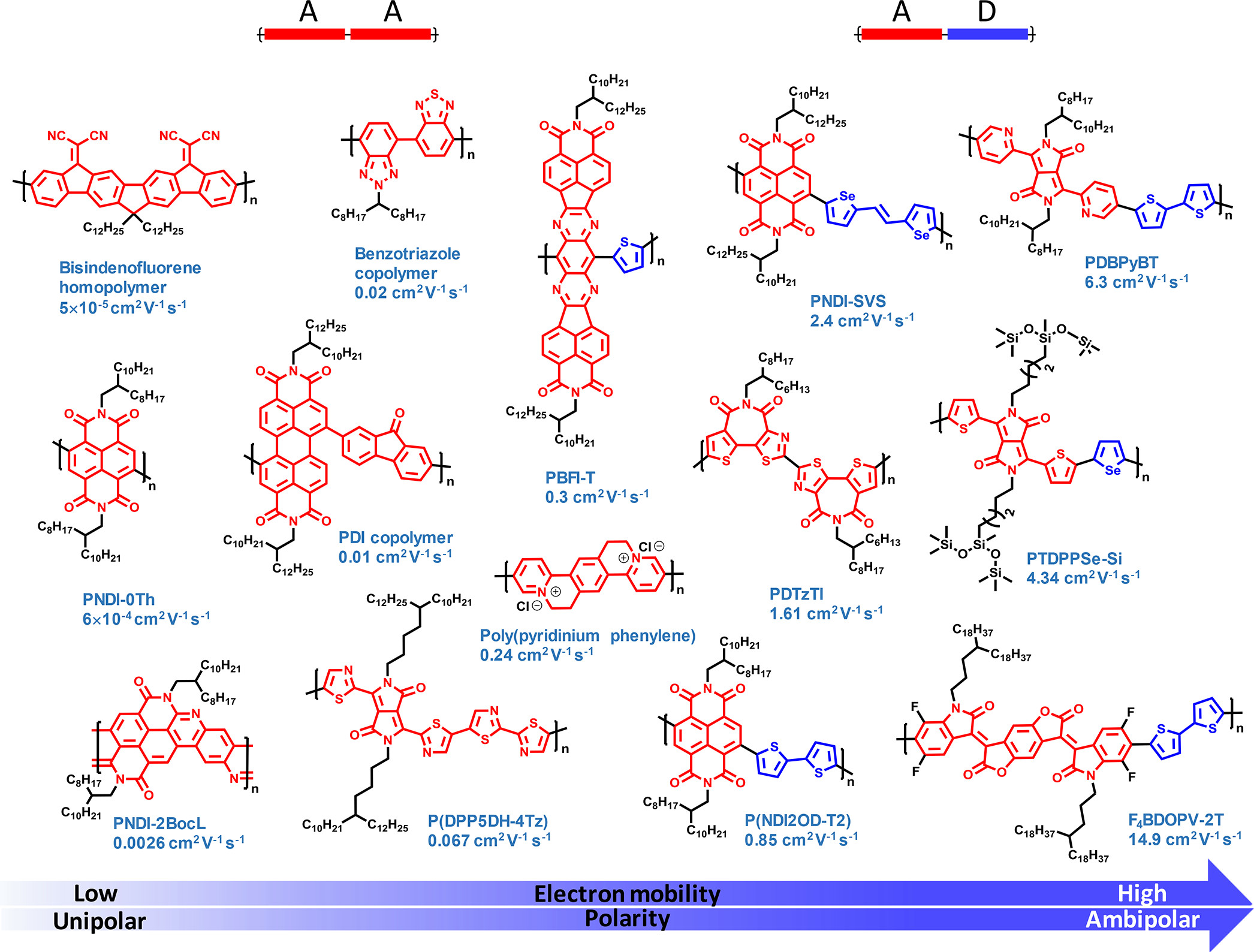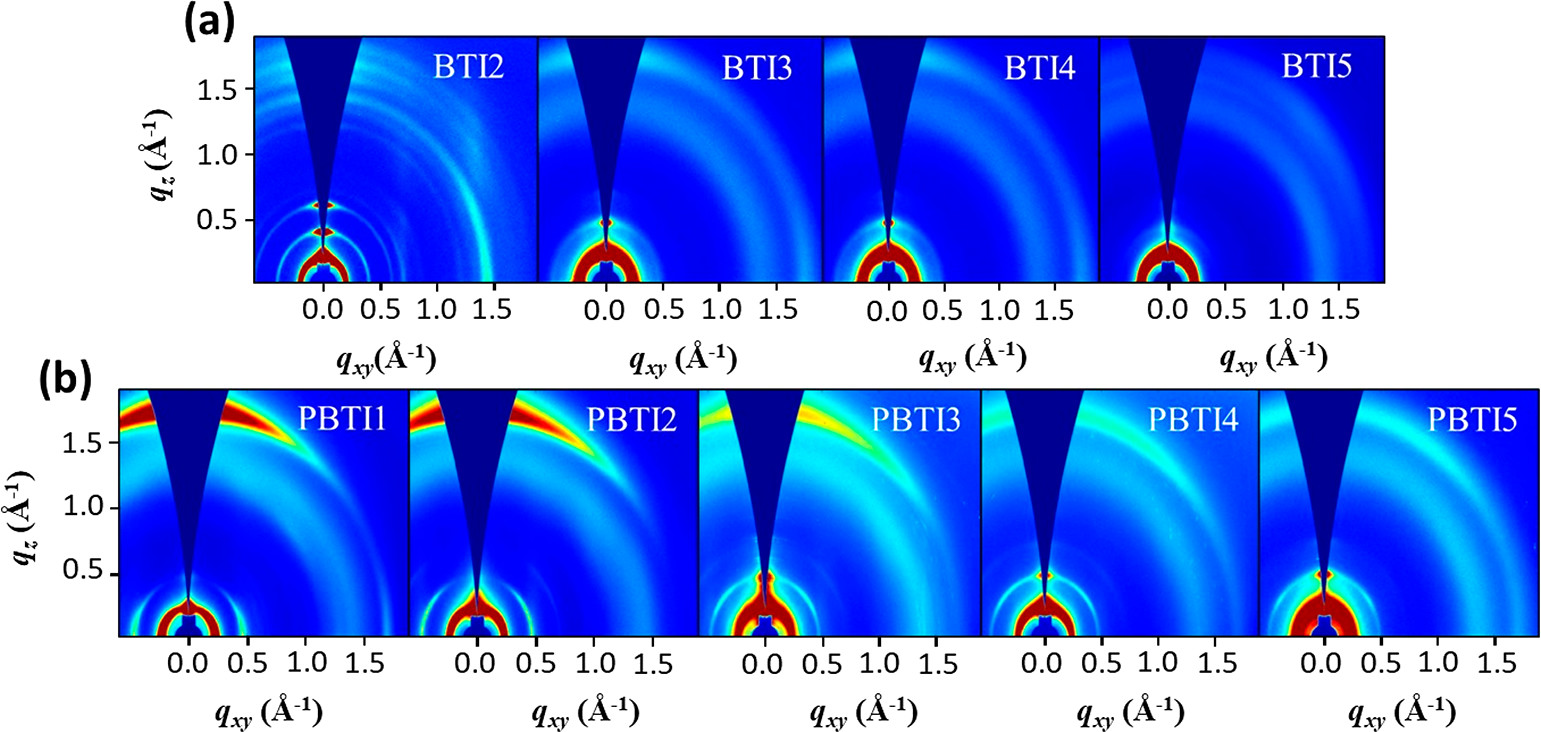Recently, Professor Xugang Guo’s group in the Department of Materials Science and Engineering at SUSTech published their latest research results as front page news in Journal of the American Chemical Society, a top international journal in the field of chemistry (IF = 13.858). Titled “(Semi)ladder-Type Bithiophene Imide-Based All-Acceptor Semiconductors: Synthesis, Structure-Property Correlations, and Unipolar n-Type Transistor Performance,” this work reported a breakthrough in n-type organic semiconductor materials (OSCs), which enabled high-performance unipolar n-type organic thin-film transistors (OTFTs) application.

Figure 1. Cover picture for the n-type organic semiconductor paper.
The performance enhancement of n-type OSCs highly relies on the development of new electron-deficient building blocks. Great success has been achieved with bithiophene imide (BTI) building block. In their earlier works, Professor Xugang Guo’s group synthesized a series of ladder-type n-channel OSCs extending from BTI, which have well-defined structures and precisely controllable conjugation lengths (Angew. Chem. Int. Ed., 2017, 56, 9924). They designed and synthesized BTI-based acceptor polymer through ring-fusion strategy, which enabled all-polymer solar cell with maximum power conversion efficiency up to 6.85% (Angew. Chem. Int. Ed., 2017, 56, 15304). The team also synthesized novel imide-functionalized thiazole and developed the all-acceptor homopolymer PDTzTI, which displayed unipolar n-type transport characteristics in OTFTs, exhibiting significantly lower off currents (Ioffs) and higher current on/off ratios (Ion/Ioffs) than common donor-acceptor polymer semiconductors while possessing remarkably high electron mobility (Adv. Mater., 2018, 30, 201705745).

Figure 2. Chemical structures of all-acceptor homopolymers PBTIn and the trend in their electron mobility.
In this paper, Professor Xugang Guo’s group designed and synthesized a series of semiladder-type all-acceptor homopolymers PBTIn (n = 1-5), based on BTI-based ladder-type small molecules BTIn. Their structure-property correlations were studied in depth. It was shown that Stille coupling is superior to Yamamoto coupling to produce polymers with higher molecular weight, improved polymer quality thus increased electron mobility (μe). Due to their all-acceptor backbone structure, these polymers have suppressed frontier molecular orbital levels, thus exhibiting unipolar n-type transport behavior in OTFTs, accompanied by low Ioffs (10−9-10−10A), high Ion/Ioffs (106). There is a monotonic decrease in μe from PBTI1 to PBTI5, the highest μe was up to 3.71 cm2 V-1 s-1 obtained with PBTI1, while that of PBTI5 was lower by two orders.

Figure 3. 2D GIWAXS images of the thin films of small molecules BTIn and homopolymers PBTIn.
Subsequent film microstructure characterization showed that the trend in μe was in good agreement with the evolvement of disorder phases within the films. Raman spectroscopy points out that the ring extension in the ladder-type building block leads to increased torsion angle between neighboring monomers, thus affecting the planarity of polymer backbones. Synchrotron XRD study reveals that long monomer structure deteriorates the π-stacking crystallinity, causing difficulties for inter-chain charge transport. These results imply that synthesizing building blocks with a more extended ladder-type backbone does not necessarily lead to improved mobilities. This study marks a significant advance in the performance of all-acceptor type polymers as a unipolar electron transporting materials and provides useful guidelines for further development of (semi)ladder-type molecular and polymeric semiconductors for applications in organic electronics.
Research Fellow Dr. Yingfeng Wang and Research Assistant Professor Dr. Han Guo from Prof. Guo’s lab are the co-first authors of this paper, undergraduate Shaohua Ling participated in part of the material synthesis work. Synchrotron X-ray measurement was conducted by Prof. Han Young Woo from the Korea University in South Korea. DFT calculation and Raman spectrum study were performed by Dr. Rocio Ponce Ortiz from the University of Málaga in Spain. This research was supported by NSFC, the Shenzhen Peacock Plan, Shenzhen Key Laboratory Fund, SUSTech Presidential Fund, and several other research grants.
Link to the paper:https://pubs.acs.org/doi/10.1021/jacs.8b02144
Proofread ByChris Edwards
Photo ByDepartment of Materials Science and Engineering